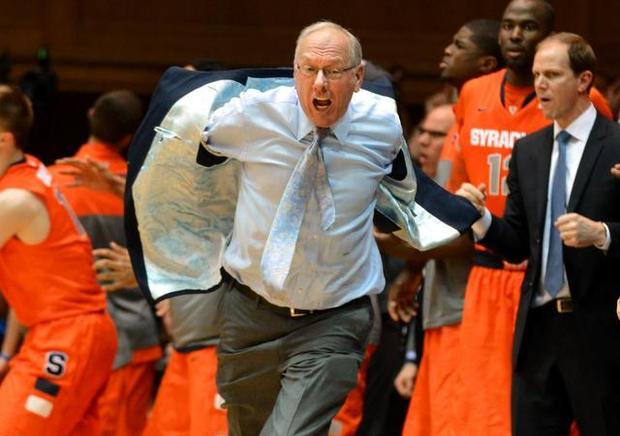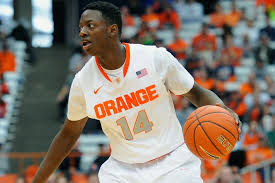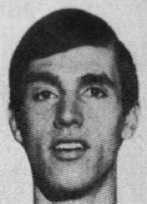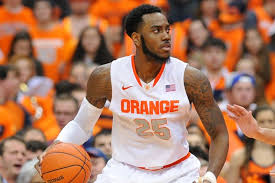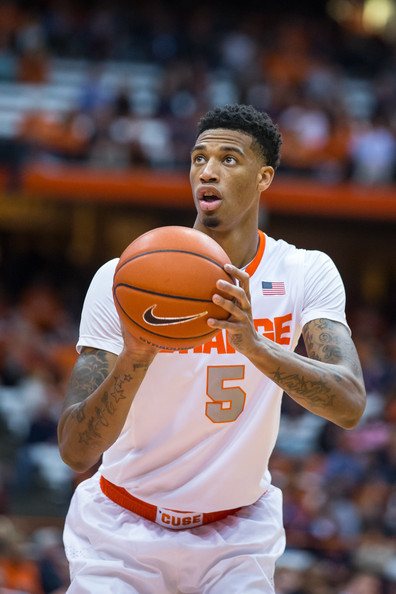It has been a week since the NCAA handed down its sanctions
on the Syracuse basketball team. During that time I have been spending a lot of
time with fellow Syracuse fans on various message boards discussing the
penalties. I wanted to let time pass before
I commented here on those sanctions.
To recap, these are the sanctions as they currently stand
- Syracuse has to give up 12 scholarships overs the next four seasons.
- Coach Jim Boeheim has to be suspended for the first 9 ACC games for the 2015-2016 season.
- The university has to pay back significant money it earned from the Big East participation in the NCAA tournament
- Syracuse has to vacate 108 wins from its record book.
- Syracuse self-imposed a ban on the ACC & NCAA post-season this year.
- Limited and reduced recruiting visits
Syracuse has been found guilty primarily of three things:
- Ignoring its own University based drug policy and having athletes who had violated those policies remain eligible to play, and failure to contact the players’ families.
- Altering the grade of Fab Melo so that he would retain eligibility to play.
- Five football and basketball players receiving a total of $8000 from the Oneida YMCA.
These are indeed violations and there needs to be a
punishment of form for these violations.
I agree with that.
And these violations did occur. Syracuse University does not dispute that
they occurred. In fact, Syracuse University reported all of these violations to
the NCAA shortly after each had occurred.
The NCAA, after an eight year investigation, found little
evidence of any other wrongdoing by the University. It took the NCAA eight
years to confirm what Syracuse told them.
My stance is that Syracuse University and coach Jim Boeheim
are being significantly punished by excessive sanctions. The investigation feels more like a vendetta
than an actual investigation.
Academic Fraud
Coach Jim Boeheim recognized that he needed help in making
sure that the players remained academically eligible to play for the basketball
team. He hired a Director of Basketball Operations named Stan Kissel. Kissel’s responsibility was to make sure the
players were getting the proper tutoring, and that they were remaining eligible
to play.
NCAA rules prohibit coaches from knowing the specific
academics for players on their teams.
All they are permitted to know is if a player is eligible to play or
not. This is important to remember.
In January of 2012 it was announced that Melo was no longer
academically eligible to play. This is a
huge mistake by Kissel, as it was his job to be on top of situations like
this. Dr. Darryl Gross,
Syracuse’s
Athletic Director, called a meeting with several administrators and staff to
see what could be done to get Melo’s grade issue resolved. Jim Boeheim was not invited to this meeting.
This is important to remember.
It was determined that a professor from a previous semester would
be willing to give Melo a better grade if he successfully completed a
paper. This is where the fraud comes
into play as Kissel and his receptionist did the paper for Melo, and submitted
it. Melo’s grade was raised, and he was
eligible to play.
Later in the semester, the University found out what
happened, suspended Melo for the remainder of the season, and reported it to
the NCAA. This suspension of Melo likely
cost Syracuse a Final Four berth and a very good shot at the NCAA championship. Kissel and the receptionist were both
terminated from the University.
The NCAA has punished Jim Boeheim for this action. How can they?
He recognized there could be a problem so he hired personnel to monitor
the situations. He was not privy to any of the actions that took place to get
Melo’s grade changed. The NCAA, through their investigation could find no
evidence that Boeheim knew anything. The
NCAA rules prohibit Boeheim from knowing anything about the specifics of the
grade.
So NOW they want to hold him accountable for it? He’s supposed to be accountable for something
he is not allowed to know?
Darryl Gross has some questions he needs to answer, and his
employment should be in question. The
individuals who actually did the fraud were dismissed. The
university already sacrificed the 2012 post season for this.
There should have been scholarship reduction implications
related to this. The games were already
sacrificed.
Drug Policy
The NCAA, amazingly enough, has no drug policy. The rule is
that if a University has a drug policy, then the University must enforce its
drug policy. Syracuse has one, and they failed to enforce it. Apparently a few
players over the years failed their drug tests due to marijuana usage, and they
should have been suspended. They were not.
Furthermore, those players’ families should have been
contacted by Boeheim. They were not.
This is a black eye for the University, but hardly a major one.
YMCA Boosters
The YMCA apparently paid $8000 to five football and
basketball players. This is an action that took place outside of Syracuse
University, and one that the University really did not have a way of knowing
about. The YMCA is disputing this
occurred. There is really nothing Syracuse can say about it because it is
something outside their control. $8000
is worthy of a penalty, but hardly earth shattering.
Scholarship Reduction
The NCAA is requiring Syracuse to eliminate 12 scholarships
over four years, three for each year. Syracuse is allowed to push that penalty
back one year to accommodate the incoming class, which Syracuse will do.
Syracuse will have 13 scholarship players in 2015-2016.
Twelve scholarships is a very large number, and four years
is a long period of time. The NCAA makes
a big issue that they are for the student athletes and they would never remove
a scholarship from an existing player.
However, the mathematics of the situation state that Syracuse could indeed
be forced to take a scholarship away from an existing player.
Syracuse has 13 scholarship players in 2015-2016. Two
players are scheduled to graduate (Michael Gbinije & Trevor Cooney). That leaves Syracuse with 11 players on
scholarship for the 2016-2017 season, which is one over the limit. It is likely that someone from Syracuse could
jump early for the NBA, or could transfer which would fix the situation. But
what if nobody does? Does the NCAA
really want Syracuse to remove the scholarship from a player?
My guess is the NCAA plans to reduce the scholarship
reductions from 3 to 2, and possibly from four years to three years. They
wanted to make headlines with their over-the-top sanctions, and they wanted to
have room to negotiate down.
They got their headlines.
The shame is that most fans across the country do not know
the details of the situation. So Jim Boeheim is labeled a cheater. There is no evidence he cheated. The university did make some mistakes and so
there are some things the university should be stained with.
But the University did NOT have any recruiting
violations. NONE. That is major cheating.
There was NOT systemic academic fraud. There was a major
case involving a big name player, and there are some other issues with tutors
and mentor semantics, that may lead to other minor issues.
There was NO systemic paying of players, and the players who
were paid were given a small sum by a booster that the University had no way of
preventing.
Look, the NCAA took its sweet time over eight years covering
everything with a fine tooth comb. The things we are certain about is that
there were NO other issues out there. The NCAA surely would have found
them.
The self-imposed post season ban for this year seems like it
was justified for ‘lack of institutional control’. A restriction of one or two scholarships made
some sense, for a two or three year period.
I would not be surprised to see many of the sanctions
reduced / eliminated. Then again, I would not be surprised if they remain close
to where they currently are.
The NCAA is
inconsistent, tyrannical, and a joke of an organization. It fails to accomplish
what it needs to accomplish. If it has
finished its original investigation in 2-3 years, many of these issues may
NEVER have occurred. And taken in the
context of small intervals of time, none of the violations in themselves are significant. Stretch out a time period long enough, pile
enough items into the basket, and you can make is sound far worse than it was.
They got their pound of flesh.
Here is the lesson that Syracuse University learned, as did all the other universities out there. Do NOT self-report your issues, and do not cooperate fully with the NCAA. Despite the fact that Syracuse systemically reported issues as they occurred, AS THEY SHOULD HAVE, they were punished for it as if they had not. They would be far better off not saying anything and hoping the NCAA never came across it. Like all the other schools that have skeletons in their closet that they have not yet reported (and now never will).
